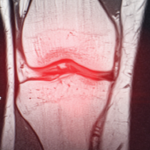SAN DIEGO—The Accelerating Medicines Partnership (AMP) is a public-private collaboration involving the National Institutes of Health (NIH), the U.S. Food & Drug Administration (FDA), multiple biopharmaceutical and life science companies, and nonprofit organizations, all joined together with the goal of transforming diagnosis and treatments for a multitude of diseases. One such condition that has been the focus of AMP is rheumatoid arthritis (RA). Thus, Reconstructing Rheumatoid Arthritis Through Space and Time: New Insights into RA Pathology from the AMP RA/SLE Consortium provided tremendous insight into the revolution taking place in this space.
Cell-Type Abundance Phenotypes

Deepak Rao, MD, PhD
The first speaker in the session was Deepak Rao, MD, PhD, assistant professor of medicine, co-director, Center for Cellular Profiling, Brigham and Women’s Hospital, Harvard Medical School, Boston. Dr. Rao (like the other speakers in the session) referenced a recent landmark article in the journal Nature. In this study, Zhang and colleagues used multi-modal single-cell RNA sequencing (scRNAseq) and surface protein data coupled with synovial tissue histology to construct an RA single-cell atlas of more than 300,000 cells. Tissues were stratified into six groups called cell-type abundance phenotypes (CTAPs), with each CTAP being characterized by selectively enriched cell states.1
The innovative concept of CTAPs is what makes this paper groundbreaking because these categories are each associated with different groups of risk genes, histological findings and serologic findings; these CTAPs may also be capable of predicting treatment response. Thus, using CTAPs to identify individual synovial phenotypes within RA may help clinicians and researchers to better understand individual groups of patients within the larger category of RA, and this data may ultimately help to identify novel treatment targets.
Dr. Rao described some of his own group’s work to further these concepts. Because RA is a disease initiated by antigen-specific T and B cells, Dunlap and colleagues applied scRNAseq and repertoire sequencing on synovial tissue and peripheral blood samples from 12 patients with seropositive RA. This allowed for identification of three distinct CD4 T cell populations that are prominent in the RA synovium: 1) T peripheral helper (Tph) and T follicular helper (Tfh) cells; 2) CCL5+ T cells; and 3) T regulatory cells (Tregs). Among B cells, it was specifically non-naive B cells (e.g., age-associated B cells, NR4A1+ activated B cells, and plasma cells) that were enriched in synovial tissue.
The key findings from this study were that 1) activated B cell populations are enriched in RA synovium; 2) there is evidence of clonal expansion and sharing between different B cell states; and 3) there appears to be a link between clonally expanded T cell populations and synovial tissue expanded B cells. The implications of these conclusions are that scientists can now better appreciate the altered cell state composition and clonal characteristics that maintain synovial inflammation in RA.2
